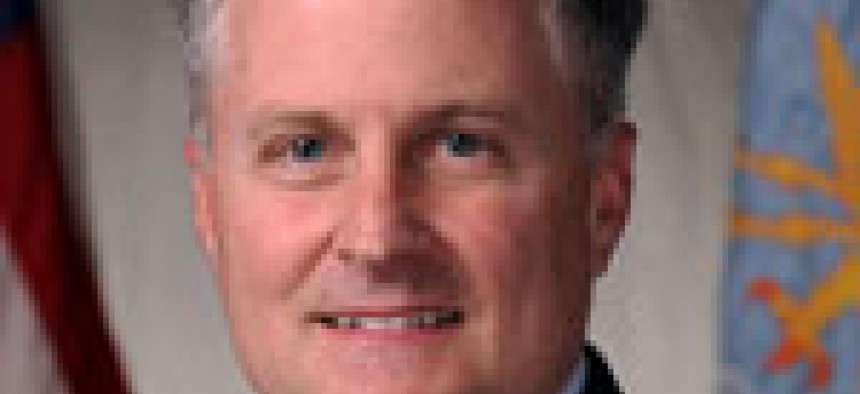An IT leader on both the traditional and cyber battlefields


Connecting state and local government leaders
As the Air Force's IT leader, Lt. Gen. William Lord faces new terrain in supporting warfighters who must switch seamlessly from the traditional battlefield to the cyber domain.
The first job Lt. Gen. William Lord held after he graduated as a second lieutenant from the U.S. Air Force Academy in 1977 was as a communications electronics officer involved with long-haul telephone carriers. Now he’s responsible for integrating all of the Air Force’s warfighting and mission support IT capabilities and for managing a $7 billion portfolio.
That’s a giant gap, filled with numerous U.S. and overseas postings and increasing responsibilities. But Lord says he still carries that first experience, in support of the North American Air Defense Command, with him.
During that time, he would go into the facility where things were taking place and see the Soviet planes coming along the east coast of Canada, see the U.S. planes scramble and then see them push the Soviets back out over the air defense identification zone.
“It gave me a real sense of operational urgency, and I got to see in real time what could happen if my piece didn’t work,” he said. “I think that’s a lot harder for young communications electronics officers today, when we send them into rooms filled with servers. It’s hard for the modern cyber warrior to get that same sense of urgency.”
One of the things Lord has focused on in the two years he’s been in charge of Air Force IT is an increase in the rate of innovation across the organization, something he sees as vital in an era of such fast technological change. He also has a goal of reducing rules and regulations, which he sees as a principal barrier to innovation, by 75 percent. He’s done away with 40 percent so far.
Another goal is stripping away inefficiencies, a necessary part of the better prioritization of programs needed in a time of budget and resource constraints. Lord thinks those constraints will also be an aid to the kind of “forward thinking” his job increasingly demands.
“The efficiencies we’re going after now have to be well thought out because of the long-term implications of what we do,” he said. “What I’m doing with the Air Force network may have an effect as we attempt to join the Air Force, Army, Navy and Marine Corps networks together.”
In that respect, he said, the constraints all organizations now have to work with probably help because of the bad behavior having lots of money promotes, when you can do a lot of things without thinking about the second- or third-order consequences.
One change the Air Force will have to grapple with, he said, is the need for the modern warfighter to have to fight on both the traditional battlefield and in the cyber domain, something he’s familiar with from his previous job as commander of the provisional Air Force Cyber Command.
Not that they are so different — Clausewitz's principles still apply to both, he said — but there is a need for people to get their heads around the difference between the kinetic and non-kinetic aspects of each, and the fact that even the cyber domain can still produce kinetic effects.
“We’re not used to that, and it will be a culture change,” he said.
There is one thing that this well-seasoned, confident IT pro admits to losing sleep over: the advanced persistent threat to cybersecurity, the “sleeper” malware that penetrates and hangs around undetected inside of networks looking for data to steal or compromise.
Lord said he is most worried about the effect this could have on the integrity of the data that’s used for decision-making. Not knowing that, you have to operate on the assumption that the enemy is already in the network, he added.
He said he thinks this threat can be overcome by the same techniques that have worked in the past, “but I’m not naive enough to believe that response isn’t biased,” he added. “That works by knowing what you don’t know and reacting to that. But I’d rather not react to it — I’d rather predict it.”




